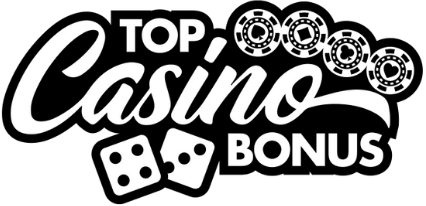Exploiting biased wheels in roulette (theory and practice)
Casinos like to pretend roulette is an airtight game, all smooth ball rolls and perfect symmetry. But any seasoned player who’s spent time near the wheels knows that’s a beautiful lie. A roulette wheel, just like any physical device, can wear down, misalign, or drift slightly off-repeatability. And when that happens? Opportunity knocks. This is the dying art of exploiting biased wheels in roulette, an old-school craft too many have abandoned.
Table of contents
Understanding what a biased wheel really is
First, let’s set the record straight. A “biased wheel” doesn’t mean a rigged wheel. Nobody’s sticking magnets under the felt or shoving the ball around with witchcraft. We’re talking about mechanical imperfection, microscopic differences in frets, slightly warped pockets, imbalance in the rotor or even scuffed ball bearings. These quirks cause certain numbers or sectors to hit more often than true randomness would allow.
Identifying a bias without fooling yourself
This is where the wheat gets separated from the chaff. Beginners think if a number hits a bit more over a few hundred spins, they’ve struck gold. Rubbish. Real bias analysis takes thousands, yes, thousands, of recorded spins. The discipline is brutal, and the margin for self-deception is high. I’ve seen too many rookies lose shirts betting on patterns that were just noise in short-term variance.
Back in the 90s, I spent six weeks logging 5,200 spins on a particular single-zero wheel in an old-school casino in Lisbon. Around spin 2,800, number 17 started appearing nearly double its expected frequency. Sure enough, the wheel had a slightly shallow pocket and a leaning rotor. I rode that edge for eight months before they replaced the hardware.
How professionals collect and analyze spin data
Don’t think your smartphone’s stopwatch and notes app are enough. You need timestamped video, ball drop velocities, rotor speeds, and detailed wheel sector charts. Use a discrete device, modified smartwatches work nicely, and chart results by quadrant and dealer. You’re not just logging outcomes; you’re studying the wheel like it’s prey.
Recognizing physical wear and operator habits
And don’t overlook the human element. Dealers develop habits over time, angle of release, spin strength, all of which can be exploited if you know what to look for. Even in polished environments like Genting Casino, repeated dealer behavior plus a slightly skewed rotor can reveal a persistent hot zone that sticks around for months.
Practical application: exploiting without exposure
You’ve found a bias. Now what? Don’t go firing max bets on one number like a madman. You must camouflage your edge. Vary your stake sizes. Bet sectors rather than single numbers, use pie-slice groupings that mask your pattern. Casinos notice sharp players who hammer the same chip placement every time. You want to look like a flighty gambler with loose instincts.
Managing your spread and bankroll
Spread bets evenly across your chosen sector. Suppose numbers 16 through 22 are hot due to a rotor tilt favoring that area. Cover that stretch with asymmetrical chips, more on the edges, fewer in the center, to reduce pattern visibility. Keep bankroll management sacred. You’re running a marathon, not a sprint. And always maintain plausible deniability.
Know where to play and when to move on
Some online casinos and live dealer platforms strive for such mechanical perfection that bias-hunting isn’t worth the trouble. But physical venues and certain hybrid platforms still present chances. I’ve personally found suspect behavior in titles at Dunder Casino and the charmingly underrated Chance Hill, particularly in rooms running European roulette with analog wheels streamed via camera.
The trick is to recognize when you’ve squeezed enough juice out of a wheel. Once results start balancing out, it’s likely been recalibrated or swapped. Don’t push your luck. Shift to a fresher target or hit pause. The sustainability lies in movement and observation, not sitting tethered to a drying well.
Dodging modern surveillance and automated flagging
These days, casinos run smart software to detect abnormal betting success. If your ROI outpaces normal variation, you’ll be shadowed or flagged. Your goal: fly under the radar. Mix in random plays, toss chips on crazy numbers, and participate in promos like a typical player. For fringe tactics, I often recommend masking your style by occasionally mimicking high-risk plays like those seen in advanced craps betting strategies.
Why pattern obfuscation is a crucial skill
The art of looking like a loser while quietly dominating the game is, frankly, lost on most modern punters. They’ll brag about win streaks until the pit bosses take notice. Me? I once took $72,000 from a flawed wheel at a now-defunct venue over 16 weeks without ever raising suspicion. I made sure to chew nails over fake losses and cheer loudest on double-zero wins I didn’t even bet.
Final reflections from the old school
Bias hunting isn’t splashy. It’s not high-octane or glamorous. It’s a craft, meticulous, silent, and intellectual. And it works. But like all crafts, it demands patience, humility, and an obsessive devotion to precision. In a world obsessed with glitz and quick scores, this strategy is hardly featured at flashy venues like Casumo, but I can tell you this, it has teeth if wielded properly.
So next time you hear the ball click around those diamonds, remember: it’s not just about chance. With the right eye and respect for the wheel, you’re not playing the game… you’re reading it.





0 Comments